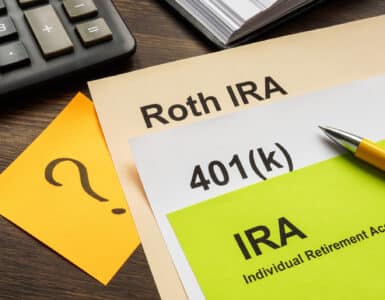Is There a ‘Right’ Amount of Emergency Funds to Have Saved?
Do one thing: If you don’t have a separate emergency fund set up outside of your main checking account, open one and set up an electronic funds transfer to move a specific amount – say $20 to start – from the main account every pay period.
Despite what you may think, emergency funds are for everyone, not just high earners. So often, we build them up with the best of intentions. Or we think about starting one, but can’t seem to take the leap and open a separate account and move money there on a regular basis.
Thing is, life can be so much less stressful if you have some cash tucked away just in case something happens. So when that something happens—and it will—you’ll be ready and won’t have to reach for a high-interest credit card to cover the cost of a massive repair bill or an emergency room visit.
If you don’t have a cash cushion just yet, don’t panic. But don’t procrastinate, either. As a group, millions of Americans are deep in debt these days and many have little left after paying monthly bills. Research from the Consumer Financial Protection Bureau (CFPB) found that nearly one-fourth (24%) of U.S. adults surveyed had no savings set back for an emergency, and 39% had less than a month of income held in reserve.
You can absolutely pay down your debt and save for the future at the same time. The key is baby steps. While sending money to credit cards and other obligations, you can still tuck away a small amount every pay period. Every little bit helps.
How Much Emergency Savings Do You Really Need?
“While there’s no hard and fast rule about how much emergency savings someone needs,” notes Kathryn Kubiak-Rizzone, a certified financial planner in Rochester, NY, there are guidelines. “A good rule of thumb has been to have three to six months of living expenses set aside.”
And when we talk about living expenses, that means the amount you need to cover the basics such as food, shelter, transportation, and utilities. If you lose your job and don’t have other income streams, you’ll need to quickly cut back on those pricey subscriptions, and restaurant dining, until you are back on your feet.
Here’s a breakdown of who typically needs more and who needs less when it comes to emergency funds.
Six to Twelve Months of Savings
The Self-Employed. “People who work for themselves often benefit from having closer to twelve months of expenses in an emergency fund,” Kubiak-Rizzone says. “That way, they don’t have to worry as much about dry spells and they can focus on what’s needed for longer-term growth and sustainability.”
Multiple Dependents. The number of people who rely on your income is an important consideration when determining how much you need in savings. The more people, the more money needed. “Households with more than one source of income could potentially get away with only having three months of expenses in an emergency fund,” notes certified financial planner Jovan Johnson, adding that “if you depend on one source of income, six to twelve months would be better.”
“When children are in the picture,” says Johnson, “it is always a good idea to play it safe. Children come with extra costs, unpredictability, and responsibility. So with children, six to twelve months of expenses saved in an emergency fund is ideal.”
Close to Retirement. Adults who are closing in on retirement may have a hard time finding work if they are unexpectedly let go. That’s why it’s important for them to have access to savings to cover up to a year of lost income.
Three to Six Months of Savings
Multiple Income Streams. Those with stable jobs who live in households with more than one earner, plus those with an accessible investment portfolio, access to low-interest credit (think home equity line of credit, not just credit cards), and possible family support may be able to get by on a smaller emergency fund, financial experts say.
Three Months of Savings
The Well Insured. Those with a full portfolio of insurance coverage (short-term and long-term disability) still need to make sure they have adequate cash set aside to cover any periods before coverage starts. “Many long-term disability insurance policies have at least a three-month waiting period before benefits kick in,” says Johnson. “In that case, you want to be sure to have at least three months’ worth of expenses set aside in cash. If you happen to have short-term and long-term disability insurance with minimal gaps in coverage, you might be able to get by with a smaller emergency fund.”
Less Than Three Months of Savings
Early Career. Those who are new to the workforce and have the ability to find another job quickly if they lose their current one may be able to get by with as little as six weeks of emergency savings. Living with roommates or family members will also help someone stretch a smaller savings pool.
With reporting by Casandra Andrews






